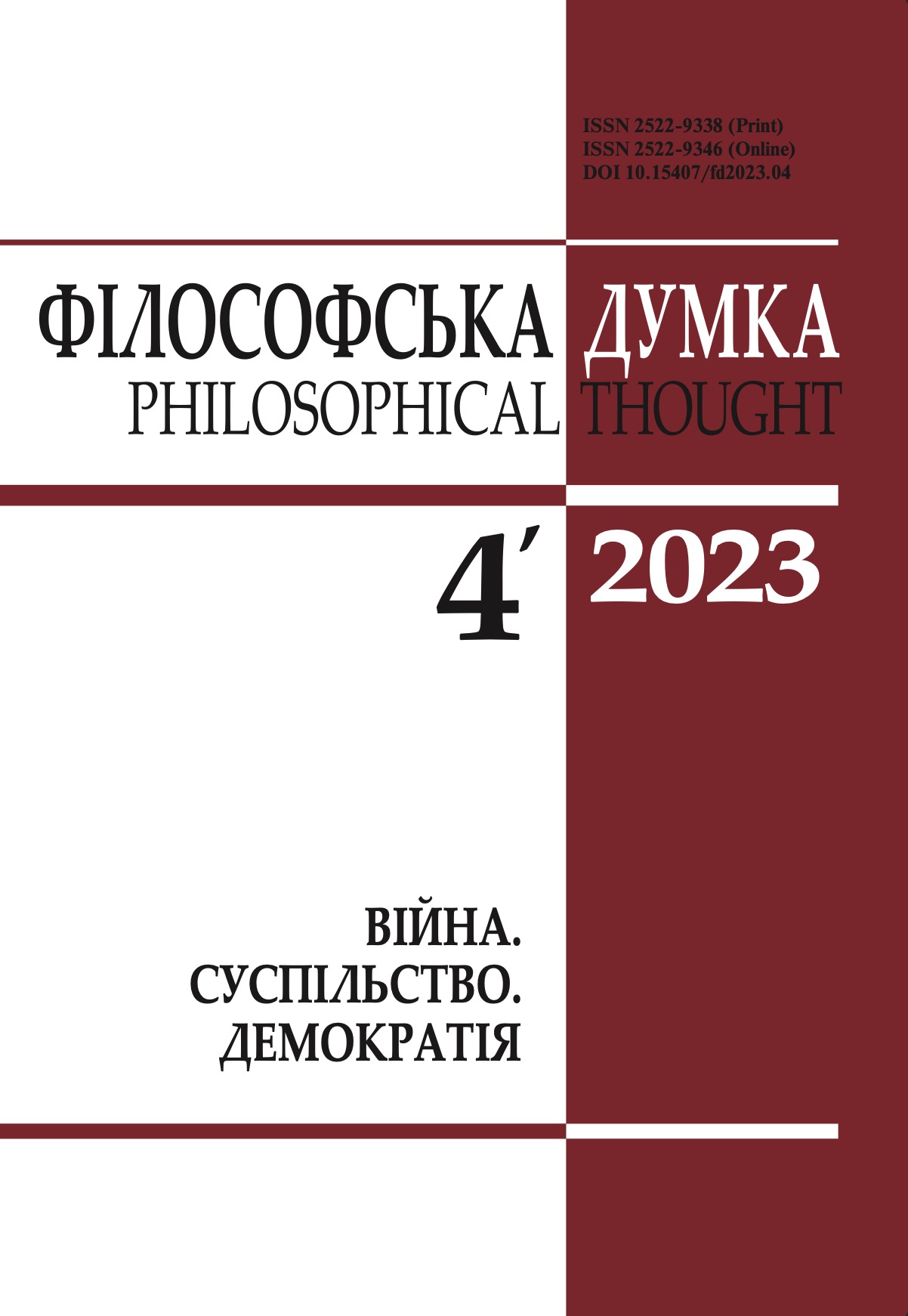THE STRUCTURAL NARRATIVE ANALYSIS IN APPLICATION: THE CASE OF MEANING EXPLICATION
YOUNG SCIENTIST’S PAGE
DOI:
https://doi.org/10.15407/fd2023.04.138Keywords:
narrative units, narrative utterances, levels of description, catalysers, function, GreimasAbstract
This paper scrutinizes the topic of meaning manifestation and signification made known by the act of interpretation, which amounts to finding the organising principles of a text and rules of combination. The language of narrativity is a set of generational and transformational instances disguising textual content and initiating interpretation as such. The paper discusses the levels of description which assist in tackling the concept of change, or difference in degrees, as the result of both the artificial operation of rewriting the text on various methodological grounds and real dynamics justified by the obvious layers of the plot. The elementary units of meaning articulation covered by this article run the gamut from Roland Barthes’ distributional and integrational narrative units to Algirdas Julien Greimas’ deep and surface structures with special stress on the narrative programs and narrative analysis, which is of primary interest here. The Greimassian narrative grammar successfully describes what exists and how to capture the process of signification. In the end, analytical instruments elaborated by Greimas are effectively adapted to interpret the case of Edgar Allan Poe’s story William Wilson. The story itself is retold and interpreted through narrative formalisation, which consists in speaking of the plot transformations in terms of utterances of states and utterances of doing. Within the framework of narrative structures that emerge on the way to the formalisation of William Wilson, small changes in narrative trajectories seem to be out of sight, not even readable. Contrariwise, Barthes’ touch on what the text is all about enables the reader to be engaged in looser textual interpretations, to gain more variable, highly detailed experience in noticing the slightest movement and tasting each nuance of the overall setting. This paper first and foremost takes on board the structural narrative analysis as it is set out in Greimas’ narrative grammar leading to a special kind of severe narrative absolutism; on top of that, the paper gives a clue of a couple of alternative views on the problem, views represented by Barthes.
References
Bertrand, D. (2009). From Narratology to Narrativity, and Back: Assessment and perspectives of Greimassian theory. Pratiques. Retreived from: http://journals.openedition.org/ pratiques/ 10348
Courtés, J. (1991). Analyse sémiotique du discours: de l'énoncé à l'énonciation. Hachette: Uni versité linguistique.
Greimas, A.J. (1987). On Meaning: Selected Writings in Semiotic Theory. Minneapolis: University of Minnesota Press.
Greimas, A.J. (1966). Sémantique structurale: recherche de méthode. Paris: Librairie Larousse.
Greimas, A.J., Courtés, J. (1982). Semiotics and language: An Analytical Dictionary. Bloomington: Indiana University Press.
Pavel, T.G. (2004). Literary Narratives. In: M. Bal (Ed.), Narrative theory: critical concepts in li terary and cultural studies (pp. 25-41). London, New York: Routledge.
Poe, E.A. (1850). William Wilson. In: The works of the late Edgar Allan Poe with notices of his life and genius (vol. 1, pp. 417-437). New York: J.S. Redfield, Clinton Hall.
Prince, G. (2004). Revisiting Narrativity. In: M. Bal (Ed.), Narrative theory: critical concepts in li terary and cultural studies (pp. 11-19). London, New York: Routledge.
Rastier, F. (1997). Meaning and Textuality. University of Toronto Press, Canada.
Downloads
-
PDF (Українська)
Downloads: 112
Published
How to Cite
Issue
Section
License
Authors who publish with this journal agree to the following terms:
- Authors retain copyright and grant the journal right of first publication.
- Authors are able to enter into separate, additional contractual arrangements for the non-exclusive distribution of the journal's published version of the work (e.g., post it to an institutional repository or publish it in a book), with an acknowledgement of its initial publication in this journal.
- Authors are permitted and encouraged to post their work online (e.g., in institutional repositories or on their website) prior to and during the submission process, as it can lead to productive exchanges, as well as earlier and greater citation of published work (See The Effect of Open Access).


